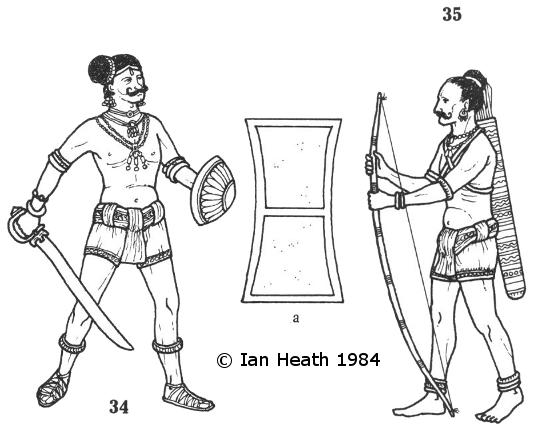
Shop Amazon - Create an Amazon Baby Registry
HINDU INDIAN INFANTRYMEN
An extract from Armies of the Middle Ages, Volume 2by Ian Heath

| ||
| [Based on ‘Court of the Horses’ at Srirangam, Tamil Nadu, India] | [Based on Relief-carving on The Bal Krishna Temple, 1513] | |
